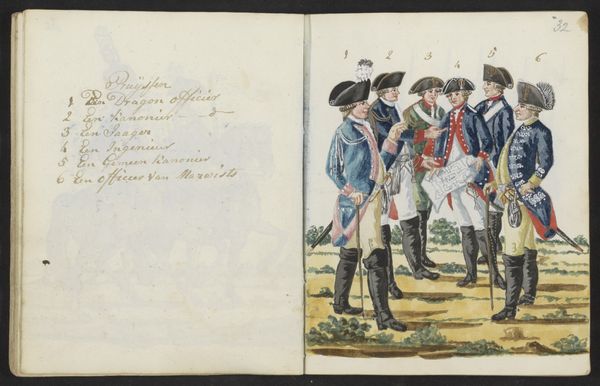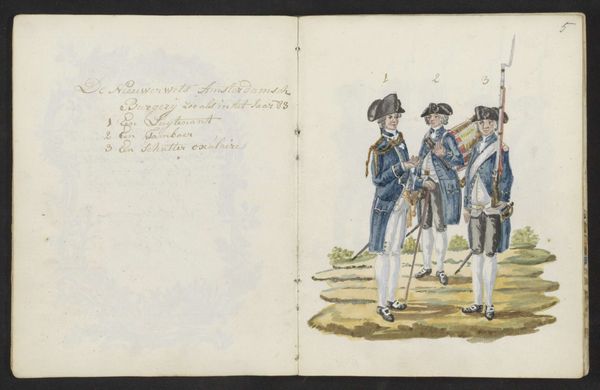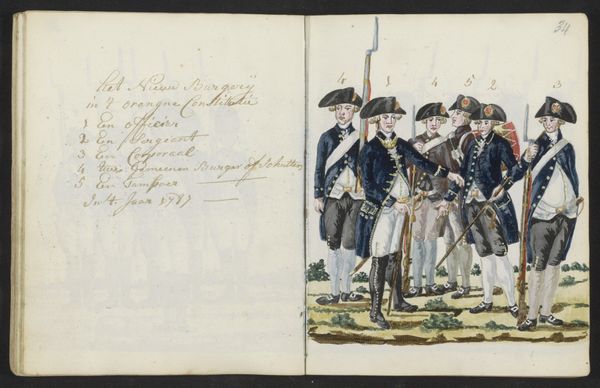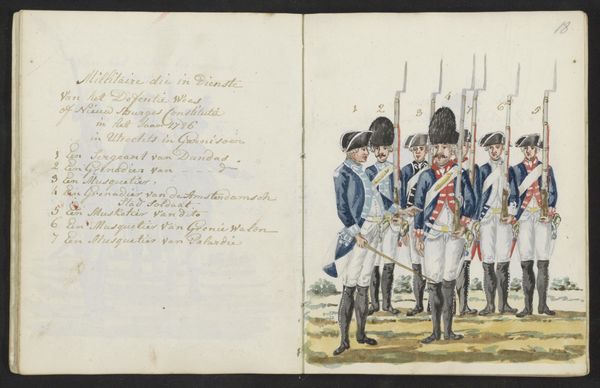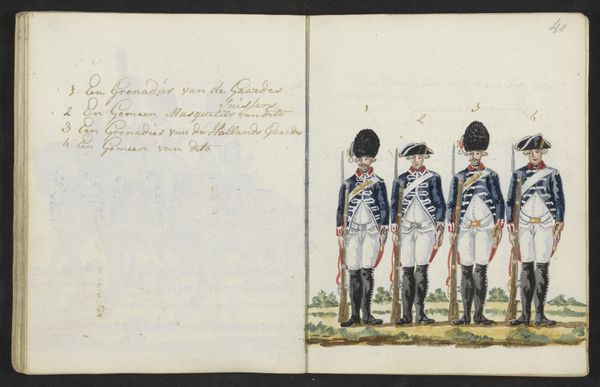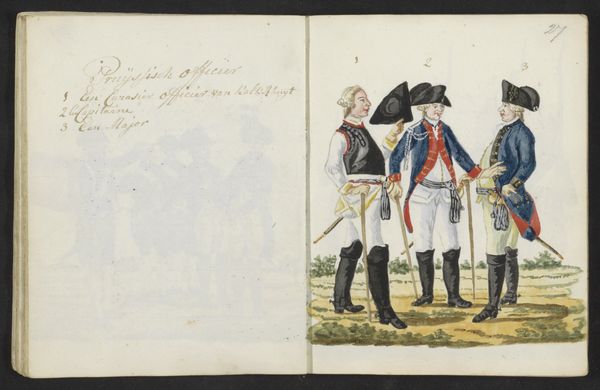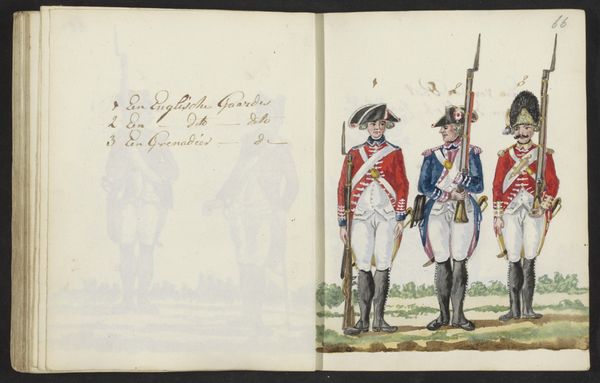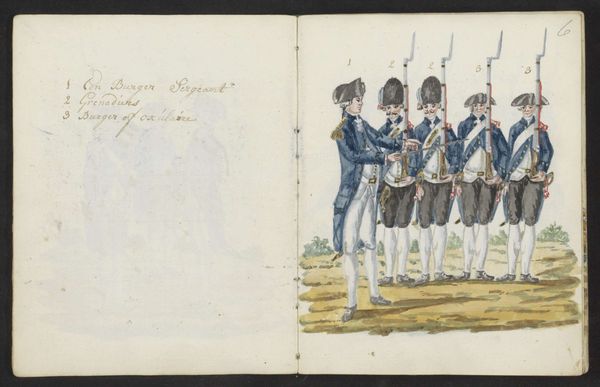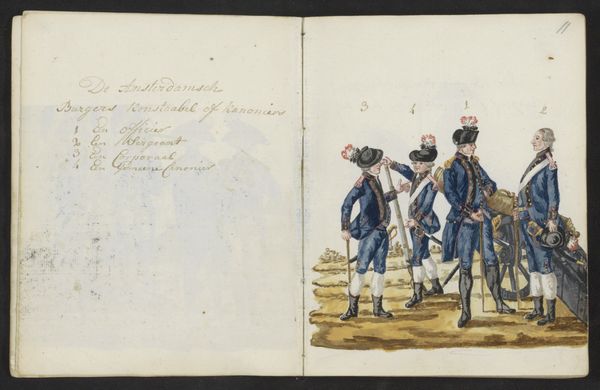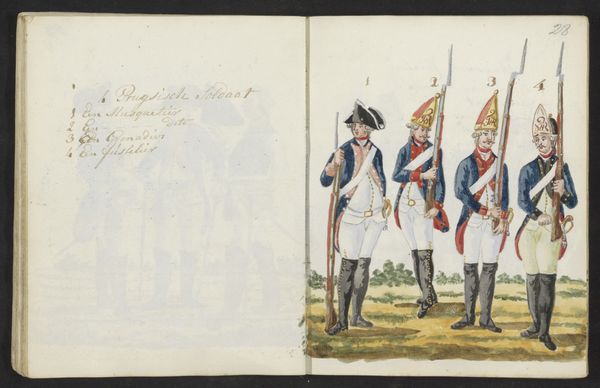
drawing, coloured-pencil
#
drawing
#
neoclacissism
#
coloured-pencil
#
coloured pencil
#
history-painting
Dimensions: height 197 mm, width 310 mm
Copyright: Rijks Museum: Open Domain
Editor: Here we have "Uniforms of citizens in mourning at the arrival of the Prussians in 1787," created around 1795-1796 by S.G. Casten. It’s a colored pencil drawing, seemingly part of a larger collection in a sketchbook. I am immediately struck by the stoic posture of these figures; their stiff formality belies the supposed sorrow in the title. How do you interpret the visual language in play here, especially given the historical context? Curator: It is fascinating, isn't it? These uniforms aren't simply clothing; they are potent symbols of civic identity and perhaps reluctant submission. Note the meticulous detail in rendering each button, each fold, and the restrained palette, suggestive of Neoclassical ideals that harken back to republican virtues and controlled emotion. Even the presence of the drum implies not celebration, but a dirge, a heavy cultural memory being carried. Look closer at their faces. What do you see there? Editor: They seem… vacant, almost as if their individual identities have been subsumed by the uniform. Is that the artist's intent, perhaps illustrating a loss of personal agency in the face of occupation? Curator: Precisely. And consider the symbolic weight of the Prussian arrival itself. The figures are caught between identities, where the vibrant colors may reference national pride, while their order also points toward constraint. Even now, these symbolic contradictions resonate deeply across Europe, underscoring the complexities of patriotism and conquest. Editor: I never thought about uniforms having so much layered meaning. It’s much more than just what they wore back then. Curator: Indeed. Images speak volumes if we know how to listen to their symbolic language, whispering stories of cultural resilience and contested power, bridging the centuries. They connect our histories with present challenges in our communities. Editor: This was amazing. I now know I'll look at historical art with new eyes and understanding.
Comments
No comments
Be the first to comment and join the conversation on the ultimate creative platform.

